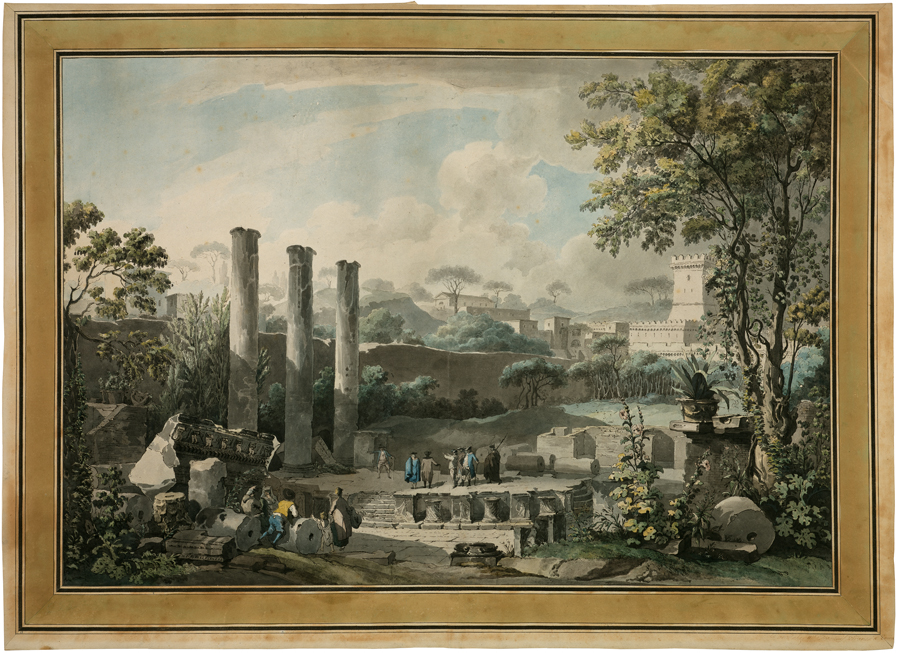Loading the page ...
Louis Jean Desprez & Francesco Piranesi
1743 Auxerre – 1804 Stockholm & 1756 Rome – 1810 Paris
The Serapis Temple in Pozzuoli. Etching by Francesco Piranesi, reworked with water colour and gouache by Louis Jean Desprez, the image surrounded by an engraved paper mat. 47.3 x 68.9 cm. Desprez’s signature and title almost completely faded, inscribed below right by Piranesi: "se vend chez Mr. François Piranesi à Rome"; on the reverse numbered in pen and brown ink: "No 6". Ca. 1781. Wollin 5 I (of II).
The present view comes from the set of vedute from the Kingdom of Naples and Sicily issued jointly by Louis Jean Desprez and Francesco Piranesi. The prospectus published by the two artists in July 1781 announced the ambitious figure of forty-eight vedute, of which only ten ultimately appeared. Piranesi’s so-called "dessins coloriés" – the ambiguity of the term was no doubt deliberate – are large-format outline etchings after designs by his older colleague Desprez, which were carefully and individually coloured by the latter with water colour and gouache so as to make them almost indistinguishable from real water colours.
The panoramic composition shows one of the most famous sights of the Grand Tour, the Serapis temple in Pozzuoli near Naples, excavation of which had begun about 1750. The ancient city of Puteoli , originally founded by the Greeks, was Italy’s largest port in the period of the ancient Republic. Desprez depicts the dolce far niente of the natives in traditional costume and the activities of elegant "tourists", who are viewing the temple grounds escorted by an armed soldier. Antique architectural fragments, burgeoning vegetation and a tree with thick foliage serve as a repoussoir, framing the real focal point of the composition: the temple platform with its three stark, towering pillars. Goethe visited the temple at about the same time these vedute were executed. In his work Architektonisch-naturhistorisches Problem , written several decades later in 1823, he produced a reconstruction of the antique shrine based on a sketch he had done on the spot.
The veduta is impressive for the sheer scale of the scene it depicts. Behind a huge wall descending at an angle we see a mellow Mediterranean hill landscape. The silhouettes of pine trees stand out strikingly against the sky, while historical buildings bear witness to a landscape shaped by millennia of culture. The cool, muted colours lend an evocative intensity to the effect achieved by the light and the atmosphere.
The colours have lost none of their freshness. An early state before the engraved names of the artists and before the title. Wollin records only few impressions of this first state, including a hand-coloured proof in Stockholm’s National Museum. The engraved frame shows slight discoloration and foxing, verso slight soiling and water-staining, otherwise in very good and original condition.
